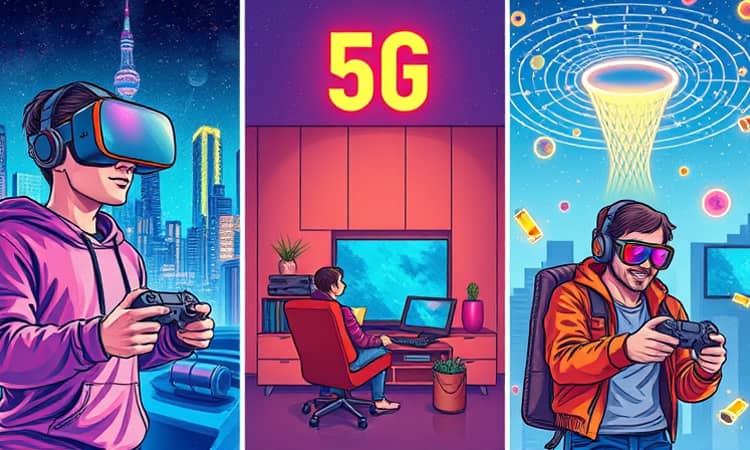The gaming industry stands on the brink of a transformative era. As we approach 2025, rapid technological leaps, shifting demographics, and evolving business models promise to reshape how we play, connect, and create.
From massive revenue milestones to immersive realities, this article explores the most influential trends guiding the next chapter of interactive entertainment.
Market Size and Growth
In 2024, global gaming revenue reached approximately $187.7 billion, marking a 2% year-on-year rise. Projections for 2025 anticipate the industry nearing $200 billion, with estimates pushing toward $211 billion when mobile gaming revenues of $116 billion are factored in.
By 2026, forecasts place the market around $205 billion, confirming gaming’s stature as a larger market than both film and music combined. Digital formats now dominate, with 95% of sales occurring via downloads or streaming.
This explosive growth underscores the unprecedented scale of digital distribution and the industry’s ability to adapt to consumer preferences in real time.
Platform-Specific Trends
Each gaming platform is carving its own path in 2025, driven by flagship releases, hardware upgrades, and evolving user behaviors.
- Console gaming: The anticipated release of Grand Theft Auto VI will spur a wave of hardware upgrades. Publishers are maximizing the PlayStation 5 and Xbox Series X|S install bases, while Nintendo gears up for the Switch 2 launch, featuring next-gen ports and new titles.
- PC gaming: Growth mirrors mobile’s ascent, fueled by in-game revenue and monetization strategies. Blockbuster live-service titles like Fortnite and Roblox continue to thrive on network effects.
- Mobile gaming: Still the world’s largest platform, accounting for 79% of all gamers. While player growth in mature regions slows, new monetization channels outside traditional app stores offer fresh revenue streams.
Major Innovation Trends
Developers and publishers are embracing both nostalgia and novelty, reinforcing player engagement through proven franchises and cutting-edge experiences.
- Cross-platform experiences connecting players worldwide: Titles such as Call of Duty
- Remakes and reboots of beloved classics: Success stories like Final Fantasy VII Remake and Resident Evil 2 Remake have paved the way for upcoming revitalizations of Silent Hill and Metal Gear Solid.
- Emerging XR applications in gaming environments: The fusion of AR, VR, and AI-driven narratives is setting the stage for experiences that transcend screens.
Technological Advancements Driving Change
Hardware and network innovations are empowering developers to push creative boundaries. NVIDIA’s GeForce RTX 50 series introduces real-time ray tracing enhanced by AI, delivering lifelike visuals and performance gains.
Sony’s PlayStation VR2 brings motion tracking and 4K HDR fidelity to virtual reality, while HP’s OMEN MAX 16 leverages the RTX 5080 GPU for desktop-class graphics in portable form factors.
The rollout of 5G networks is a game-changer. With substantially faster download speeds and reduced latency, cloud gaming services and on-the-go AR/VR experiences become seamless realities.
Metaverse Expansion
The concept of a unified metaverse is gaining traction. Gaming worlds are evolving into interconnected realms where players interact, socialize, and transact across multiple platforms.
Leveraging decentralized Web 3.0 technologies, companies are experimenting with blockchain-based economies, digital ownership, and cross-realm avatars. This convergence promises new revenue streams and profound shifts in how we perceive virtual identities.
Shifting Audience Demographics
Gen Z continues to form the core of engaged players, with 54% gaming daily. However, diversification is accelerating. Female participation is rising steadily, and older generations are rediscovering gaming through accessible mobile titles.
As gaming becomes more embedded in everyday life, it also solidifies its role as a key channel for culture, storytelling, and social connection.
The Evolution of Service Models and Hardware
Live-service games such as Fortnite and Roblox exemplify a shift toward continuous content updates and evolving worlds. In-game monetization—battle passes, cosmetic purchases, and subscription tiers—underpins recurring revenue.
Simultaneously, console makers are preparing for next-wave hardware. The Nintendo Switch 2 and potential mid-generation upgrades from Sony and Microsoft aim to provide enhanced performance and exclusive features, catering to both casual and hardcore audiences.
Meanwhile, PC architectures grow more modular and affordable, enabling enthusiasts to build systems optimized for ray tracing and AI-accelerated gameplay.
Charting Your Path Forward
For gamers, developers, and industry observers, 2025 presents a landscape of boundless creative possibilities and emerging opportunities. Whether you’re a player seeking richer multiplayer communities, a studio crafting the next AAA hit, or an entrepreneur exploring new business models, the future is wide open.
By staying informed on market trends, embracing cross-platform design, and leveraging the latest technologies, you can position yourself at the forefront of this revolution. The world of gaming is more vibrant and interconnected than ever—prepare to level up.
References
- https://explodingtopics.com/blog/gaming-trends
- https://www.activisionblizzardmedia.com/blog/gaming-industry/gaming-in-2025-advertising-trends
- https://unity.com/resources/gaming-report
- https://newzoo.com/resources/blog/global-games-market-update-q1-2025
- https://www.gamesradar.com/games/the-6-biggest-gaming-trends-of-2025/
- https://www.blog.udonis.co/mobile-marketing/mobile-games/gaming-industry
- https://techresearchonline.com/blog/top-gaming-technology-trends-and-innovations/
- https://www.ey.com/en_us/insights/media-entertainment/what-s-possible-for-the-gaming-industry-in-the-next-dimension














